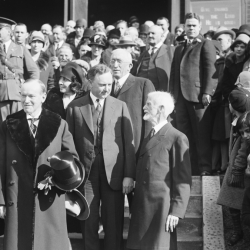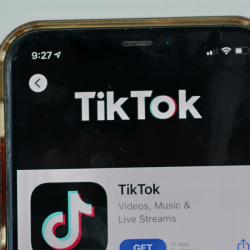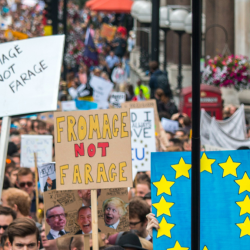I confess to being something of a politics nerd…
I follow politics like other people follow sports. But I loathe the tone of most political advertising — it feels like a race to the bottom to paint the country and other politicians in as poor light as possible. Who wants to view that? I sense I am not alone as surveys in many democracies reveal a decline in public engagement with politics and the voting process.
Therefore, as we face elections in the UK and USA, and the advertising spend is ramping up — I wonder if it is useful to rethink our ideas of how political advertising could work, to improve the experience for all.
For this column I was inspired by a project started by Andrew Ehrenberg a few decades ago — which looked at the ‘Form Advertising Takes’ (and became affectionately known as the ‘FAT’1 project). The dominant mental model of how advertising works was that advertising is about persuading people to buy. Under this model, advertisements are a ‘salesperson’ for the brand, and so need to have a compelling reason to buy, such as a Unique Selling Proposition (USP), or some way of convincing the buyer that this brand was different or better than other options.
As usual, Andrew questioned the prevailing wisdom and put forward a competing theory, that arose from his decades of research into buyer behaviour and brand performance. His ‘advertising as creative publicity’ model (later published in the Journal of Advertising Research), claims the most common role of advertising is to keep useful brand memories fresh in the minds of category buyers.
Only occasionally, when there is genuine new news, does advertising need to create new memories, but even then, we need to remember that new news is only new once, and after that first exposure, advertising with that message serves to remind and keep that brand memory fresh.
As one way to test what advertising does (rather than what it was intended to do), he asked different groups of people to view advertising and assess if it had persuasive or publicity qualities.
The project team, which included my colleague Professor Rachel Kennedy, found that only one third of advertising says things I did not already know, while half of advertising was judged to only remind me of the brand. This got get me thinking — what form does political advertising take?
The persuasion model of advertising is the most obvious first stop. In political advertising these are typically advertisements that say either one party is better, or the other party is worse or sometimes both. Often these advertisements involve scare tactics (such as if you vote X party then the country will be swamped with immigrants) and paint a negative picture if the wrong choice is made.
A second model, about brand as celebrity, is also apparent in political advertising. This is about raising the fame of the brand to be well-known, irrespective of the source of that fame. In political advertising this is advertising that focuses on the candidate’s personality, rather than the party or policies. This is likely more prevalent in countries with presidential elections, where people vote for a person rather than a party to lead the country. But even in countries with a parliamentary system, the party leader can be elevated to be a brand separate from the party, as illustrated by the rise (before the fall) of Boris Johnson in the UK.
A third model of advertising is Ehrenberg’s creative publicity, which is in line with mental availability building. Under this model it is important to include the brand to ensure it benefits from the fresher category memories, but the aim is to keep memories fresh so that when someone goes to buy, they have a greater chance of thinking of the brand. For political advertising, this would be more of a focus on building links to issues relevant to voters and the relevant policies, and less on the competition or the leadership.
Just as a quick test of this idea I looked at 60 political social media ads shown in May 2024 for the Conservative and Labour parties in the UK (taken from the Meta Ad library). The ads were coded on six dimensions, that collapsed into the three advertising types.
I found the most common style of advertising was persuasive, with direct comparisons between parties, implying one is better than the other, comprising half the advertising tested. Following this were creative publicity style advertising which is advertising that just states policies for the parties, without comparison, at around 30% and celebrity style, which was about extolling candidate virtues or highlighting failures/shortcomings, third ranked at 20%.
I also coded whether the tone was positive or negative. Positive tone ads talked about which party/person was better, while negatively toned ads talked about which party/person was worse. An ad could be either or both. For this aspect of the advertising, the negative outweighed the positive by a 2:1 ratio. Now if the dominant form of political advertising is negative in tone, with attempts to convince you that the other party or leader is worse, is it any wonder that people are turned off and disengaged with politics and would rather vote ‘none of these’?
I accept that was a very small test of the form political advertising takes, and I appreciate there are experts who will say this negative persuasive advertising works. But this was what was thought about brand advertising for the longest time, and we know now that brand advertising does not have to be persuasive to be successful.
Perhaps the same could be true for political advertising?
Can we re-think our model of how political advertising works and consider options other than the current (negative) persuasion paradigm? Perhaps a mental availability model might work? I’d love to test this I just simply have not had the time, but the thought that it could makes me hopeful.
Imagine a world where political advertising was less about the race to the bottom to denigrate the country and the opponent to win an imaginary argument, and more on raising the mental availability of the party and its leader’s ability to help voters and the country in a wide range of areas.
- Where viewers enjoy (and even talk about and share) the advertising they experience.
- Where parties are in a race to build the strongest distinctive assets.
- Where the aim is to communicate a wide range of useful positive messages, to build wider, fresher memory networks for your party/candidate amongst voters.
Political advertising might then become more useful to the potential voter and more motivating to act upon.
Key references
Ehrenberg, Andrew S C, Neil Barnard, Rachel Kennedy, and Helen Bloom (2002), “Brand advertising as creative publicity,” Journal of Advertising Research, 42 (4), 7-18.
Mills, Pam, Rachel Kennedy, Andrew Ehrenberg, and Tony Schlaeppi (2000), “The Forms That TV Ads Take,” in ARF/ESOMAR Worldwide Electronic and Broadcast Audience Research Conference, Deborah Fellows (Ed.) Vol. 238.
You can connect with Professor Rachel Kennedy on LinkedIn.
Featured image: Rick Alday / Unsplash
- Ironically Amelia, the Institute researcher who replicated this work for online advertising was a fitness fanatic who competed in body sculpting competitions! ↩︎
































